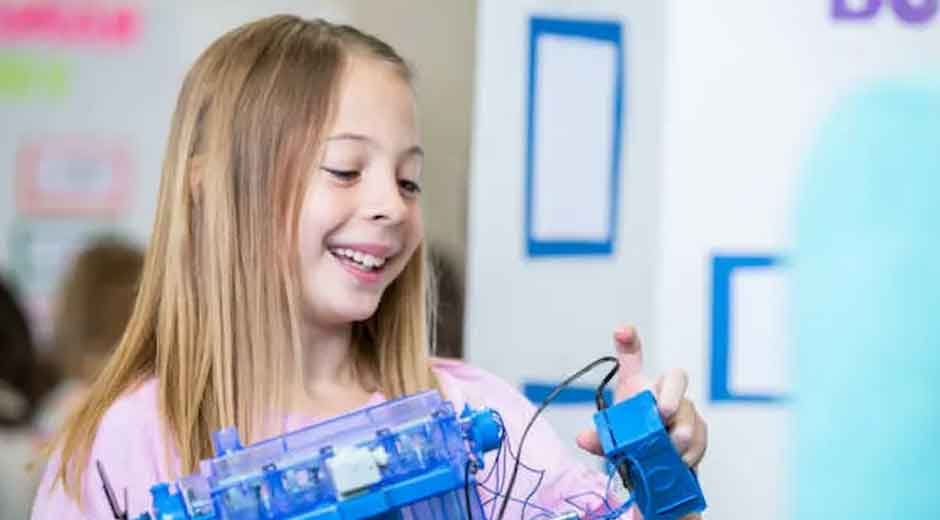If you’ve ever dreamed of building your own robot, you probably know it’s not just about connecting wires and metal parts. Robots are made up of carefully chosen components that each play a unique role in how the machine moves, senses, and reacts to the world.
Whether you’re creating a small classroom bot or an advanced autonomous rover, knowing the essential robotic parts is the foundation of every successful build.
In this guide, we’ll explore the key elements that bring robots to life, how they work together, and what to look for when choosing parts for your next project. Let’s dive in!
Motors: The Muscle Behind Every Move
Motors are the heart of robotic motion. They convert electrical energy into mechanical energy, allowing robots to spin wheels, lift arms, or turn sensors.
The type of motor you choose depends on your robot’s job and precision needs. Here are the main types you’ll come across:
- DC motors
- Servo motors
- Stepper motors
When selecting a motor, think about torque (how strong it turns), speed, and voltage requirements. Many beginners start with servo motors because they’re easy to control using hobbyist microcontrollers like Arduino or Raspberry Pi.
Pro tip: Always check that your power supply can handle your motor’s current draw-burning out a power board is a mistake every builder only makes once!
Sensors: The Robot’s Eyes and Ears
If motors are the muscles, sensors are the senses. They give robots the ability to perceive their environment and make intelligent decisions.
Sensors detect everything from light and distance to touch and sound. Some of the most common ones include:
- Ultrasonic Sensors
- Infrared (IR) Sensors
- Gyroscope and Accelerometer
Sensors turn a simple machine into something responsive and smart. For example, pairing ultrasonic sensors with servo-mounted “heads” lets your robot scan its surroundings and navigate on its own.
Controllers: The Robot’s Brain
At the center of every robot is a controller-the part that processes sensor data and tells the motors what to do next. It’s often a microcontroller, such as an Arduino, or a more advanced computer like a Raspberry Pi.
Microcontrollers are best for handling basic commands quickly, such as moving motors and reading sensors. Single-board computers like the Raspberry Pi can run more complex programs, even Artificial Intelligence or vision recognition software.
For more advanced robots, a combination of both is common: the microcontroller manages the real-time motor and sensor work, while the computer handles high-level decision-making or data processing.
When setting up your controller, make sure you:
- Match pins with components.
- Manage power carefully.
- Write efficient code.
Power Systems: The Energy Source
Every robot needs a reliable power source. This can be as simple as a few AA batteries or as advanced as a rechargeable lithium-polymer (Li-Po) pack. Power is what keeps everything running smoothly, from the controller to the motors.
The key is finding the right balance between power capacity and weight. A heavy battery might run longer, but it can slow your robot down or affect its balance.
Here’s what to consider:
- Voltage and Current
- Battery Type
- Power Distribution
Keeping power cables organized and labeled will save you hours of troubleshooting later.
Structural Components: The Robot’s Skeleton
The frame or chassis is your robot’s foundation-it holds everything together and affects movement, load capacity, and durability. Common materials include aluminum, plastic, and carbon fiber, chosen based on weight and strength needs.
Lightweight frames suit mobile robots, while heavier builds add stability. Modular kits make upgrades easier, and planning your layout before assembly ensures a balanced, efficient design.
Communication Systems: Talking to Your Robot
Modern robots don’t work in isolation-they communicate. Whether it’s sending sensor data to a laptop or coordinating with another bot, communication modules are key.
Bluetooth, Wi-Fi, and RF modules allow wireless control and data transfer. For example, you can program a robot via Bluetooth using your smartphone or send live video over Wi-Fi from a camera bot. Advanced robots might even use protocols like ROS (Robot Operating System) for complex coordination between multiple devices.
Actuators: Adding Life to Motion
Actuators go beyond motors-they can include pneumatic or hydraulic systems that move parts through air or fluid pressure. These are often found in industrial or humanoid robots that need smooth, powerful, or human-like motion.
While electric motors dominate small-scale robotics, actuators are vital when strength or precision under heavy loads is required. Builders experimenting with robotics arms or grippers will often combine small actuators with gears or linkages for added control.
Integrating It All: The Art of Robotic Design
The magic of robotics happens when all these systems come together. The controller reads sensor data, decides what to do, and signals the motors to act-all powered by your battery and held together by your frame.
Designing a robot is like solving a puzzle where every part must fit perfectly. Even small details like wiring, weight balance, and sensor placement can affect how well it performs.
When you start combining components, keep your wiring tidy and modular. This makes troubleshooting easier and allows you to swap out parts as you upgrade.
If you’re just getting started or looking for reliable components, you can find quality robotic parts that suit any project level-from educational kits to advanced engineering builds. Having dependable parts makes experimentation easier and more rewarding.
Troubleshooting and Testing
Before letting your robot roam free, test every system individually. Check that motors respond correctly, sensors provide accurate data, and your power system can handle the load.
If your robot behaves unexpectedly, use a step-by-step approach:
- Test the power first.
- Then check connections.
- Finally, review your code logic.
Keeping a log of small changes helps track down problems quickly. Robotics is as much about patience and persistence as it is about creativity.
Bringing Your Robot to Life
Building robots is an exciting blend of creativity and technology. Knowing how motors, sensors, controllers, and power systems work together helps you design machines that move and think with purpose.
Each project teaches new skills and brings you closer to mastering robotics. Whether it’s your first build or an advanced upgrade, great robots always start with strong fundamentals and the right parts.
Ready to create? Start building and watch your ideas come to life, one component at a time.
Is this article helpful? Keep reading our blog for more.











